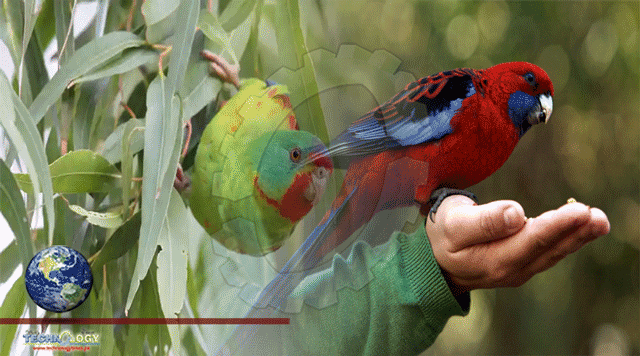The case was made in a proposal that ecologists and environmentalists believe could slow the rapid loss of the swift parrot, a migratory bird that experts predict will become extinct in ten years unless something is done.

Researchers revealed that a critically endangered bird could be given a fighting chance by saving 7% of Tasmania’s natural forests from logging.
The case was made in a proposal that ecologists and environmentalists believe could slow the rapid loss of the swift parrot, a migratory bird that experts predict will become extinct in ten years unless something is done.
Monitoring the World’s Fastest Parrot
It’s difficult to keep track of the world’s quickest parrot. It spends the winter in Victoria and New South Wales before nesting in different sections of Tasmania each summer, depending on where the blue gum, its major food source, is blossoming.
However, no one can deny that the number of fast parrots has decreased. According to a CSIRO-issued birds population guide published in December, the population is at 750, down from over 2,000 a decade ago.
According to The Guardian, the loss of huge, hollow-bearing trees required for breeding is the principal cause, according to a new analysis issued by BirdLife Australia, the Wilderness Society, and the Tasmanian nonprofit the Tree Projects.
While the parrot confronts additional risks such as sugar glider predation and rising bushfire risk as a result of the climate crisis, habitat loss from logging remains the “number one” concern, according to Dr Jennifer Sanger, a forest ecologist with Tree Projects.
Threats Facing Swift Parrot
The Tasmanian Liberal administration claims to have found a solution to the declining birds population. It announced a strategy called the public authority management agreement in late 2020, under which it vowed to protect 9,300 hectares of southern woods from logging, as per Pehal News.
According to the paper On the Edge of Extinction, 69 percent of the newly set aside territory was previously exempt from logging, either owing to operational difficulties or because sections of it were already in reserves.
In practice, the new policy would halt logging in just 2,900 hectares, leaving other areas with mature trees that the fast parrot depends on open to the forestry sector. All rapid parrot foresting and nesting habitat on Tasmanian public property should be safeguarded, according to scientific advice to the government.
Requirements for Swift Parrot Protection Plan
According to the report, a rapid parrot preservation strategy would only require the industry to give up 7% of the forest area on state territory that is now available for logging. It would safeguard 40,000 hectares of mature forest and 20,000 hectares of regrowing forest, both of which might supply future habitat.
It claims this may be accomplished by listening to the board of Sustainable Timber Tasmania, a state-owned forestry company, which advised the state government in 2016 that logging was not profitable if it had to reach a legal quota of 137,000 cubic metres of sawlogs per year. It was proposed that this be reduced to 96,000 cubic metres, a 30% reduction in timber supply.
Guy Barnett, the state’s resources minister, rejected the industrial group’s request. After decades of struggle, the Liberal state government was elected in 2014 on a promise of terminating a Labor-Greens “peace pact” between business and environmentalists and growing native forests to promote jobs in remote towns.
The report’s authors argue that the quota should be abolished totally, but that lowering it to the amount proposed by Sustainable Timber Tasmania might be sufficient to stabilize parrot populations. It would also benefit other species, according to Sanger, and keep a considerable amount of carbon locked up in the state’s mature wet eucalyptus forests.
Source: Nature World News